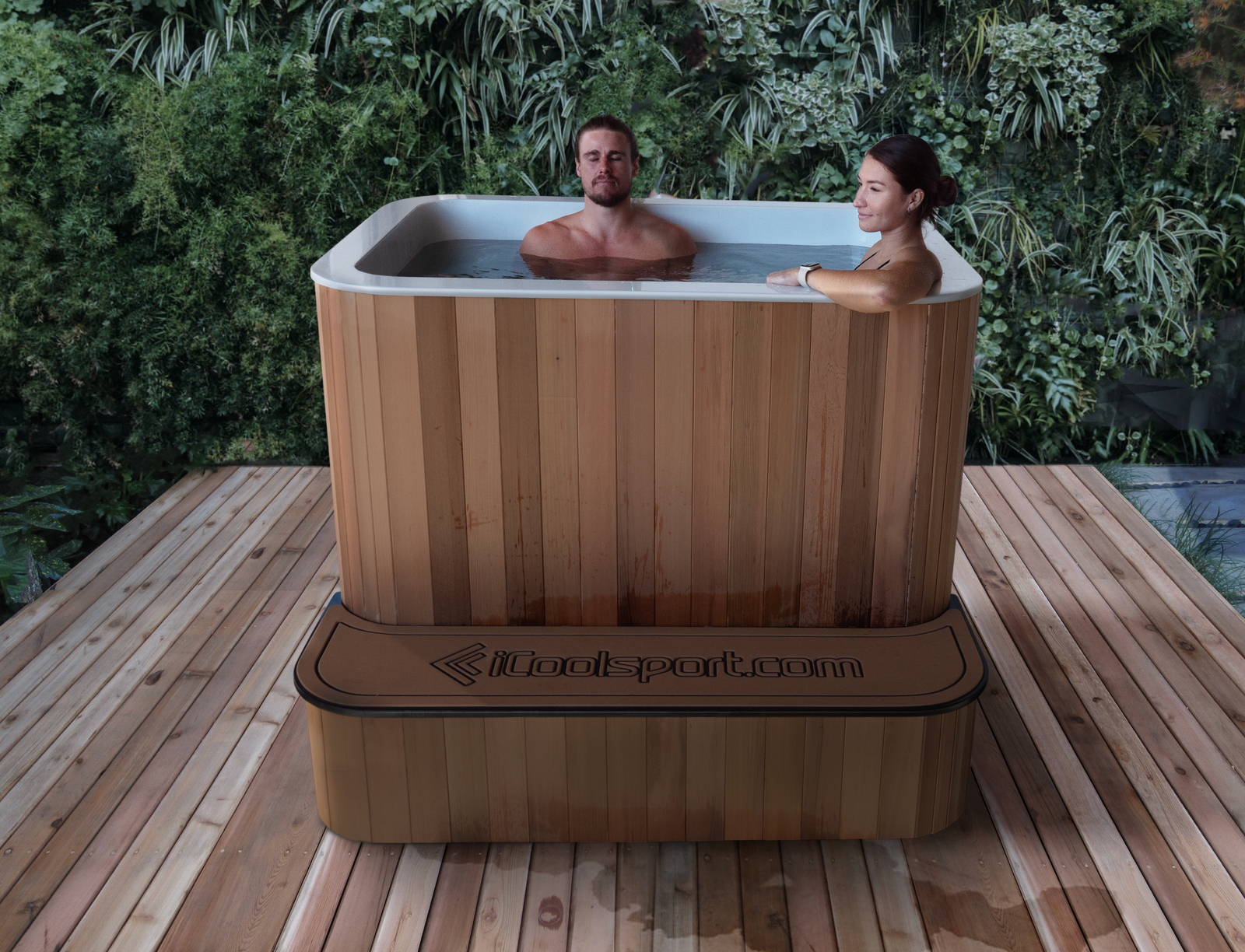Women and Cold Water Immersion: Understanding Gender Differences in Cold Temperatures
Cold water immersion, a practice embraced by the fitness community and science enthusiasts, has been gaining attention for its health benefits.
However, men's and women's reactions to cold temperatures can be markedly different, affecting how each gender should approach cold exposure.
Recently discussed in an Andrew Huberman Lab podcast featuring Dr. Susanna Soberg, men and women can experience these effects differently due to inherent biological differences.
Dr Susanna Søberg is an expert in this field and is Renowned for her 10 years of groundbreaking work in metabolism and the transformative power of cold, heat, and breath.
Let's dive into the differences men and women experience during cold water immersion.
Equal Energy Expenditure and Mechanisms
One key aspect of cold water immersion is its impact on energy expenditure. Studies consistently show that both men and women experience an increase in energy expenditure during cold exposure.
This is a natural response as the body works harder to maintain its core temperature in a cold environment.
However, while the rate of energy expenditure is similar, the mechanisms by which men and women compensate for heat loss differ.
For women, the body employs a few unique strategies to manage and retain heat more efficiently:
-
Vasoconstriction: This process involves narrowing blood vessels, particularly in the extremities, to reduce blood flow to the skin and minimise heat loss. By constricting blood vessels, women can keep more blood circulating in their core, which helps maintain vital organ temperature.
-
Glucose Breakdown: During cold exposure, women rely more on glucose breakdown (glycolysis). This metabolic process generates energy and heat, helping to counteract the cooling effects of the cold water. The reliance on glucose breakdown suggests that women’s bodies may prioritise quick energy sources to fuel the heat retention process.
- Increased Brown Fat Activity: Brown fat, a type of fat tissue known for its ability to generate heat, is more active in women during cold exposure. Unlike white fat, which stores energy, brown fat burns calories to produce heat. This is advantageous for women, allowing them to generate warmth and buffer against the cold.
Earlier Onset of Muscle Shivering
Another key difference between men and women during cold water immersion is the onset of muscle shivering.
Shivering is a natural response to cold exposure, where the body rapidly contracts muscles to generate heat. However, women typically begin shivering earlier than men.
This earlier onset of shivering can be attributed to women's smaller volume-to-mass ratio. A smaller volume-to-mass ratio means less body mass relative to the body surface area, making it more difficult to retain heat.
As a result, the body triggers shivering sooner to combat the more rapid heat loss.
Gender Differences in Response to Cold
While cold water immersion offers numerous benefits to all, gender differences in response are noteworthy. Dr. Soberg notes that women tend to have more brown fat than men, which may influence their reaction to cold exposure.
Women often exhibit stronger temperature regulation and might experience less shivering due to their higher brown fat levels.
However, their smaller size and differing physiology mean they might lose heat faster, necessitating shorter exposure times than men.
Why Do Men and Women React Differently to Cold?
Size and Physiology
Men and women differ in size and physiology, influencing how their bodies respond to cold.
These differences affect thermogenesis—heat production in organisms—and the body's ability to maintain its core temperature.
Core and Extremity Temperature Variations
Women's core body temperature is typically 0.4°C higher than men's.
This difference is significant because a higher core temperature can influence how women perceive and endure cold.
Conversely, women's hands are generally 3.8°C colder than men's, indicating a disparity in extremity temperature regulation.
Metabolic and Psychological Benefits
Cold exposure triggers a cascade of biochemical reactions, including the release of catecholamines such as dopamine and epinephrine.
These neurotransmitters are crucial for mood regulation and energy levels.
Dr Soberg’s research highlights that both men and women experience a mood uplift and increased energy post-cold exposure. However, women often report a more significant boost in positivity and reduction in stress levels.
Conclusion
While gender provides a general framework for understanding differences in cold exposure responses, individual adaptations vary.
Factors such as body composition, fitness level, and prior cold exposure experience significantly influence how one reacts to cold water immersion.
Sponsors of the Butterfly Effect competitions
We want to understand the differences between genders and celebrate them.
That’s why iCoolsport is a proud sponsor of The Butterfly Effect Competition.
The Butterfly Effect is a female-only fitness competition designed to raise awareness about negative body image and eating disorders.
“Did you know that Over 1 million Australians are living with an eating disorder, and less than a quarter of them receive treatment or support?”
To attend an event or for more information, visit the site below:













